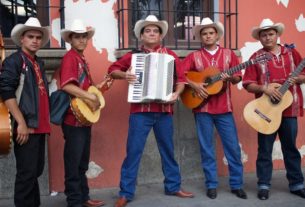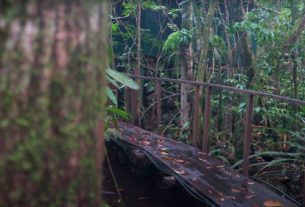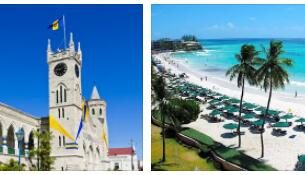According to the Constitution of 1981, the “Westminster model” of the organization of state power operates (see Antigua and Barbuda). Administratively, it is divided into 6 districts: Belize, Cayo, Corosal, Orange Walk, Stann Creek, Toledo. The largest cities are Belize City, Orange Walk, San Ignacio, Dangrinja, Belmopan. British dominion. The head of state is the Queen, represented by the Governor General (since 1993 – K. Young). The Commission for the Reform of the Constitution, which developed a draft of the new Basic Law in 2000, did not come to a consensus on the advisability of a transition to a republican form of government and did not make recommendations on this issue. Legislative power is vested in the bicameral National Assembly, which consists of a 29-member House of Representatives elected by universal direct and secret suffrage by majoritarian system for 5 years, and a 12-member Senate appointed by the Governor General. 6 senators are nominated by the prime minister, 3 by the leader of the opposition, 3 by religious and public organizations. The executive power is the government of 13 people. Prime Minister – appointed by the Governor General, leader of the parliamentary majority (since 1998 – S. Musa). Check diseaseslearning for political system of Belize.
Local governments operate in the person of city councils elected once every 4 years, consisting of 11 members in Belize City and 7 in the remaining 8 cities.
The most prominent political figure in the history of Belize was J. Price, president of the General Workers’ Union from 1947 to 1952, one of the founders in 1950, and since 1956 the leader of the country’s first People’s United Party. The party he led became the main force in the struggle for internal self-government and then independence. In 1964–84 and 1989–93 he was prime minister, during his time in power the country made significant progress along the path of modernizing the economy and strengthened its independence by normalizing relations with Guatemala. In 1996, at the age of 77, he resigned as leader of the party. Proclaimed “Father of the Nation”.
The People’s United Party initially adhered to a social democratic orientation, in recent years it has proclaimed the thesis of a “mixed economy under Belizean control.” She was in power in 1954-84 and 1989-93. Again heads the government since 1998. In the March 5, 2003 elections, she received 53.2% of the vote and 22 seats in the House of Representatives. Leader – S. Musa. The United Democratic Party (UDP) was finally formed in 1974. Adheres to conservative views. Ruling party in 1984-89 and 1993-98. In the 2003 elections, she received 45.6% of the vote and 7 seats in the House of Representatives. Leader – D. Barro. The National Alliance for the Rights of Belize was created in 1992 by politicians who left the UDP as a sign of disagreement with the policy of concessions to Guatemala. She was a junior partner in the UDP government from 1993-98.
In domestic policy, a course is being pursued to combat poverty and the harmonious development of all ethnic groups, in foreign policy, to finally eliminate differences with Guatemala and expand cooperation with the countries of Central America, along with the strengthening of traditional ties with the Caribbean states.
The Defense Forces were created in 1978, the Navy and Air Force – in 1983. They consist of a regular army of 1050 people. and a battalion of volunteers of 700 people. The regular army is formed from men and women on a contract basis. The ground forces (70% of the personnel) consist of 3 rifle companies, a combat support company and a logistic support company. The volunteer battalion is formed on a territorial basis: one company for two districts.
Belize has diplomatic relations with the Russian Federation (diplomatic relations with the USSR were established in May 1991).
Science and culture of Belize
Almost 6% of GDP is directed to the development of education. Compulsory and free education for children aged 5 to 14. Students in schools run by non-government, predominantly churches, accounted for (1999/2000) 87% of the total in primary and 79.1% in secondary school. There are 234 primary and 39 secondary schools (2002). A computerization program has been launched, providing for the installation of 5,000 computers with Internet access in schools. Less than 3,000 people continue their education after leaving school. Secondary specialized education is provided by agricultural, technical, medical, pedagogical colleges and courses for the training of teachers in primary schools. Higher education has been provided since 1986. In 2000, independent educational institutions were merged into the University of Belize as part of 6 faculties: agriculture and natural resources, sciences and arts, business, social sciences, mechanization and computer science, health and social sciences. 5 weekly newspapers are published, 3 radio stations and 4 television stations operate.
The largest state cultural institution is the Baron Bliss Institute, which includes a library, a theater, an archaeological museum, a Council of Fine Arts; under the leadership of the institute, 74 libraries operate throughout the country.
In Belize City there are maritime and historical museums, in the city house of culture there are permanent exhibitions of silver and glass products and furniture, in the vicinity of the city there is a zoo. Private art gallery and voluntary museum in the largest tourist center – San Pedro. 10 monuments of Mayan architecture. In 2003 the first international film festival took place.



